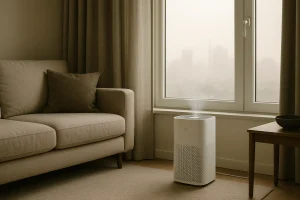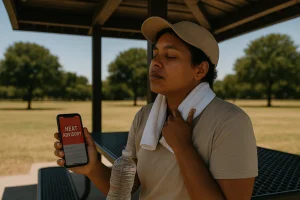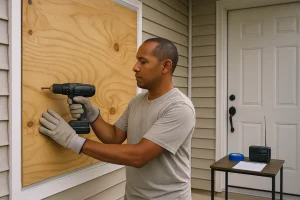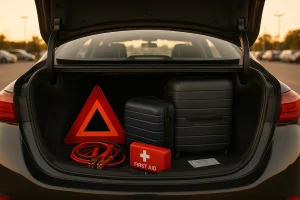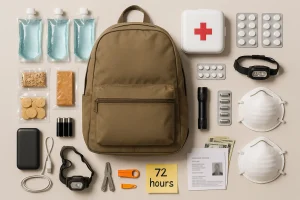Labor Day Travel Safety (2025): Car Kit, Rideshare, Hotel Checks
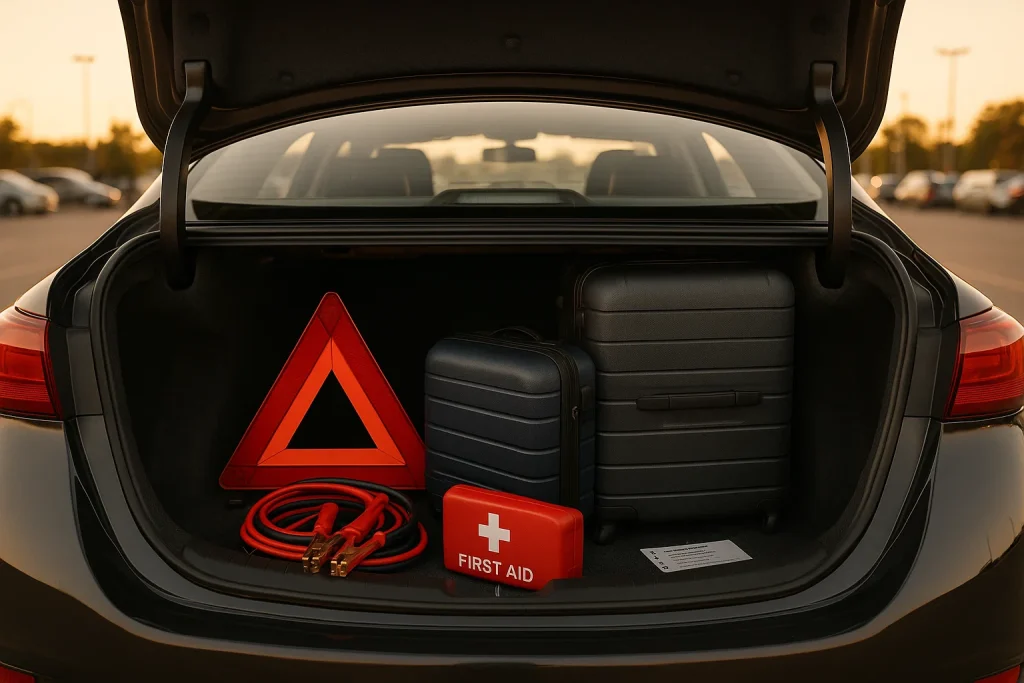
A kit and checklist improve Labor Day travel safety.
Updated: August 20, 2025
Quick Steps: Before you go, check tires & brakes, pack a car kit, plan sober driving with rest stops, and set up rideshare & hotel safety checks. At the airport, remember TSA 3-1-1 liquids and keep power banks in carry-on. If something feels off—leave and get help.
Compliance: Educational only—this isn’t medical or legal advice. Follow local laws and official guidance. Call 911 for emergencies.
Your Ultimate Guide to a Safe and Happy Labor Day Getaway
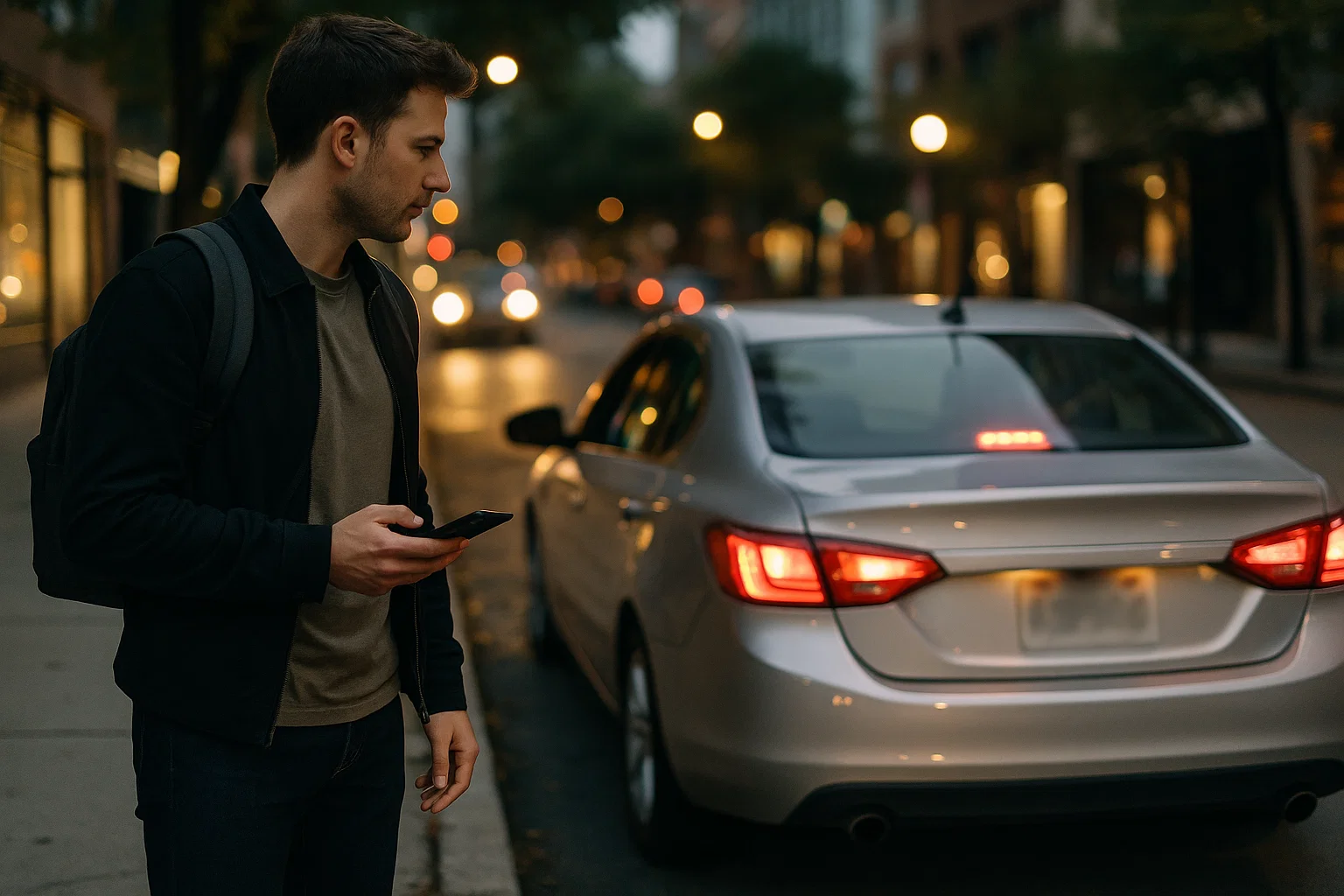
Labor Day weekend is the glorious final encore of summer, a time for one last beach trip, a visit with family, or a city adventure. With millions of Americans hitting the road and taking to the skies, a little preparation is the secret ingredient to ensuring your holiday is filled with joy, not stress. This guide will walk you through essential tips for Labor Day travel safety, covering everything from your car to your hotel room, so you can focus on making fantastic memories.
Your Car: The First Line of Defense
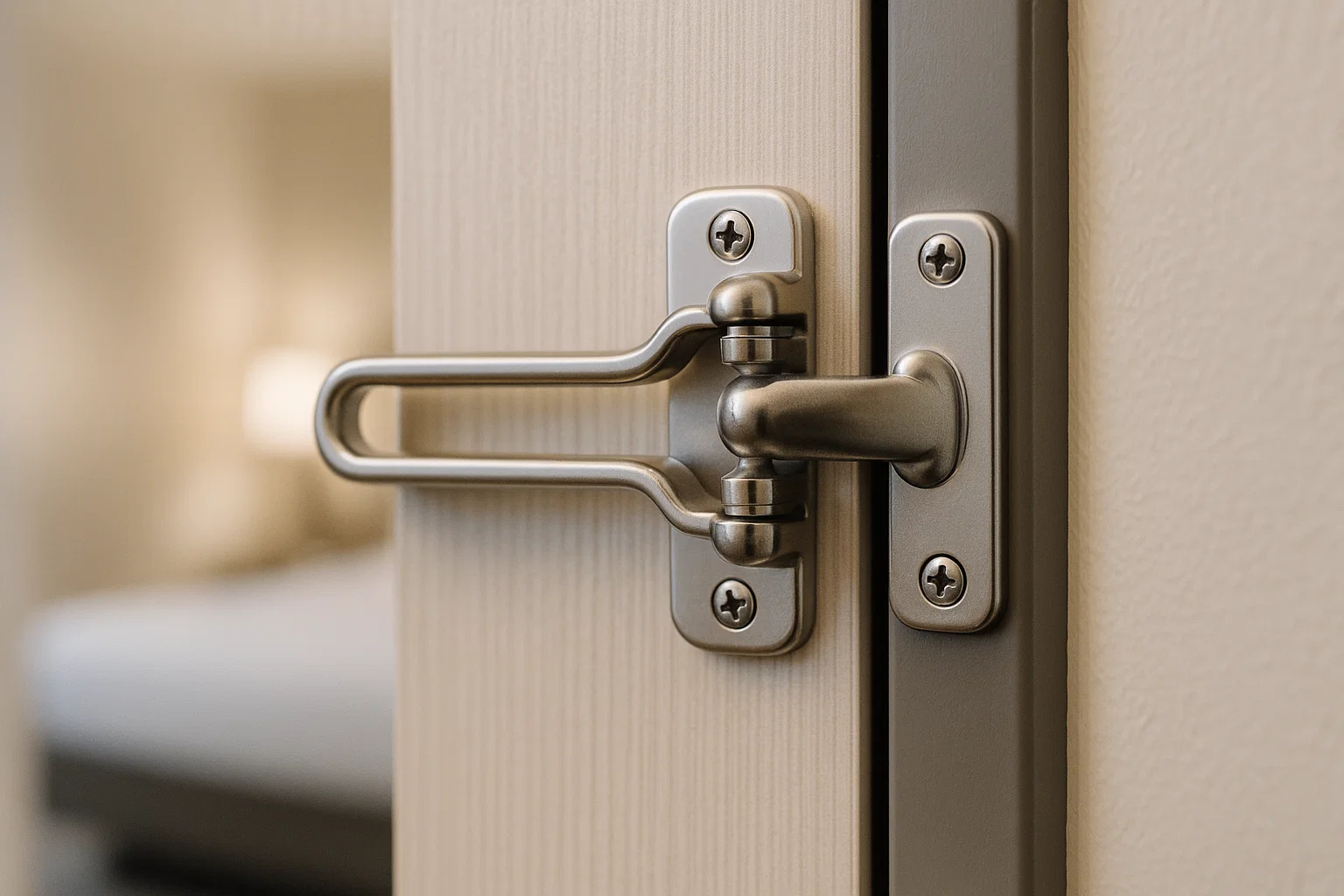
For many, the journey begins on the open road. Before you queue up your favorite playlist, take an hour to ensure your vehicle is ready. Check your tire pressure (including the spare!), fluid levels, and ensure all lights are working. This proactive check is the foundation of Labor Day travel safety.
Next, pack a well-stocked emergency car kit. This isn’t about expecting the worst; it’s about being prepared for anything, turning a potential ordeal into a minor inconvenience. Your kit should include:
- Essentials: Jumper cables, a flashlight with extra batteries, basic tools, and a first-aid kit.
- Comfort & Safety: Blankets, drinking water, non-perishable snacks, and a portable phone charger.
- For the Unexpected: A reflective warning triangle or flares and a multi-tool.
Knowing you’re prepared for a flat tire or a unexpected delay brings immense peace of mind, letting you enjoy the drive knowing that you are prepared for what lies ahead on the road with your car kit ready.
If you’re opting for a rideshare to avoid traffic or to get to a party safely, a few quick tips will enhance your rideshare safety. First, verify your ride before you get in. Confirm the license plate, car make and model, and the driver’s name and photo in the app all match what’s in front of you. Never ask a random driver if they are “your Uber.”
Second, ride in the back seat. This gives you and the driver personal space and allows for a safer exit on either side of the vehicle. Finally, share your trip details with a friend or family member directly through the app. They can track your ETA and see that you’ve arrived safely. Rideshare safety is all about using the smart features built into the apps themselves.
Your Home Away From Home: Hotel Smarts
You’ve arrived! But before you jump on the bed, take two minutes to secure your new temporary home. Hotel safety starts the moment you check in. When receiving your key, discreetly ensure the front desk clerk doesn’t announce your room number loudly. If they do, politely ask for a different room.
Upon entering, inspect the locks on the windows and doors to ensure they function. Always use the deadbolt and security chain. It’s also a great habit to locate the fire exits and map a quick escape route from your room. Finally, avoid broadcasting your absence on social media in real-time. Post those amazing vacation photos after you’re home. Simple hotel safety habits let you relax completely, knowing you’re secure.
Soaring Through Security with Ease
For the jet-setters, navigating airport security is the final hurdle before your vacation truly begins. The golden rule to remember is the TSA 3-1-1 rule for carry-ons. It’s simple:
- 3 ounce bottles or less for liquids, gels, creams, and pastes;
- 1 quart-sized, clear, resealable bag;
- 1 bag per passenger.
Place this bag in a bin for easy screening. Knowing the TSA 3-1-1 rule cold will save you from frantic repacking at the checkpoint and help you glide through security with a smile. Remember to wear shoes that are easy to slip off and have your ID and boarding pass readily accessible. A little preparation makes the process smooth and stress-free for you and everyone in line behind you.
The Final Destination: Fun!
Labor Day is a celebration of hard work and a well-deserved break. By incorporating these simple Labor Day travel safety tips—preparing your car kit, practicing smart rideshare safety, being mindful of hotel safety, and mastering the TSA 3-1-1 rule—you empower yourself to fully embrace the joy of the long weekend. Here’s to a safe, smooth, and incredibly happy holiday getaway
Why this matters now
Labor Day weekend is one of the busiest travel periods of the year. Crowded roads, packed airports, late-night returns, and unfamiliar hotels raise risk. This guide shows how to prevent the most common problems—crashes, breakdowns, lost items, scams, and unsafe rooms—with simple steps you can do today. It’s written for quick action: short sections, checklists, and exactly what to do if plans change.
Set your baseline: sober, rested, buckled, and focused
Most severe holiday crashes trace back to the basics—impaired or distracted driving, speeding, and not wearing a seatbelt. Commit now:
- Sober driving, no exceptions. Plan a driver or rideshare before you go out. Take keys off the table when you get home.
- Seatbelts every seat, every trip. Recheck child seats for proper install and harness fit.
- Slow down & add space. More cars mean longer stopping distances.
- Phone down. Hands-free maps only. If you need to type, pull over safely.
Road-trip prep that prevents 80% of headaches
Your car doesn’t need to be new—it needs to be ready. Do these the day before:
- Tires: Set pressure to the door-jamb sticker (check when cold). Inspect tread and sidewalls; don’t ignore bulges or cords. Ensure a usable spare or inflator kit.
- Brakes: If you feel pulsing or hear grinding, get a quick check. Better now than in mountain traffic.
- Fluids: Oil, coolant, windshield washer. Top up as needed; carry a small funnel and rags.
- Wipers & lights: Replace streaky blades; test brake lights and turn signals.
- Navigation: Download offline maps for your route; dead zones happen.
Car kit: build it once, use it all year
Keep your gear compact and organized so anyone in the family can find it fast.
- Roadside: jumper cables or lithium jump pack (charged), tire inflator & gauge, sealant/plug kit, reflective triangle/vest, multi-tool, work gloves.
- Comfort & first aid: water (1–2 gallons), electrolyte packets, shelf-stable snacks, compact first-aid kit (bandages, antiseptic, tape, pain reliever), tissues, wet wipes, hand sanitizer.
- Power: car charger, long cables, fully charged power bank (in the cabin, not trunk), spare batteries.
- Docs & basics: license, registration, insurance, roadside-assist info, cash in small bills, flashlight/headlamp.
- Seasonal: sunshade, light blanket, poncho, compact umbrella.

Smart routing and timing (avoid the crush)
- Leave early mornings or later evenings when traffic is thinnest—aim to avoid Friday rush and Monday afternoon return waves.
- Stagger breaks away from major rest stops; small-town parks or supermarkets can be safer and less crowded.
- Watch weather & incidents the day of travel. If a storm or closure pops up, adjust calmly and early.
Busy weekends increase rideshare demand—and mistakes. Before you enter any car:
- Match the plate, make, model, and driver photo in your app.
- Ask their name first—“Who are you picking up?”—not “I’m [your name].”
- Sit behind the driver for the best exit options and visibility.
- Share your trip live with a trusted contact; keep your phone powered.
- Trust your gut: if anything feels wrong, don’t get in. End the ride and rebook if needed.
Move pickups to well-lit, visible areas; at night, wait indoors until your driver arrives.
Hotel room safety: 60-second routine that sticks
When you reach the room, do a quick pass before you unpack:
- Check the door hardware: deadbolt, latch, peephole. Report loose or broken parts immediately.
- Scan the hallway for emergency exit maps and stairs; count the number of doors from your room to the stairs (useful in smoke).
- Check connecting doors—ensure they’re locked on your side.
- Secure valuables out of sight; use the room safe for passports and small electronics.
- Window & balcony: confirm latches; supervise kids closely near rails.

Airport playbook: TSA 3-1-1 and battery rules
- Liquids in carry-on: up to 3.4 oz (100 mL) containers in a single quart-size bag (the “3-1-1” rule).
- Power banks & spare lithium batteries: carry-on only—never checked.
- Empty water bottle through security; refill at a fountain to save money and stay hydrated.
- Organize electronics at the top of your bag to speed screening.
Kids on the move: car seats, breaks, and boredom busters
- Reinstall car seats correctly after rentals or vehicle swaps; harness at armpit level, pinch test on straps.
- Plan breaks for meals and play; a 10-minute stretch prevents meltdowns.
- Pack a kid bag with snacks, wipes, change of clothes, small trash bags, and simple games.
Night driving: bright ideas without glare
- Clean your windshield & glasses inside and out to avoid halo glare.
- Match speed to vision—if you can’t see far enough, slow down.
- Use high beams wisely and dim for oncoming cars.
Fuel, restrooms, and stops: keep it visible and fast
- Choose bright, busy stations and park in view of the entrance.
- Lock the car even for quick trips inside; keep valuables out of sight.
- Move on if anything feels off; there’s always another exit.
What to do if the car breaks down
- Signal and pull over to the right shoulder or the nearest safe turnout; angle wheels away from traffic if on a slope.
- Turn on hazards. If you have triangles, place them 10–100 feet behind the car (more on high-speed roads).
- Stay inside with belts on if you’re close to fast traffic. Exit only when safe, away from lanes.
- Call roadside assistance with your exact mile marker or map pin.
After-party plan: getting home safely
- Pre-book a ride or pick a true sober driver before drinking starts.
- Confirm the driver with the app checks above; don’t accept sidewalk solicitations.
- Eat and hydrate before bed; set two alarms if you have an early drive/flight.
Simple money & ID protections
- Separate cards: one daily card in your pocket/wallet, one backup locked in the hotel safe.
- Carry a photocopy or digital photo of your passport/license (not for ID—just recovery).
- Use tap-to-pay where possible; it’s harder to skim.
Quick table: who needs what this weekend
| Traveler | Top Risks | Do This First |
|---|---|---|
| Family with kids | Car-seat errors, meltdowns, illness | Reinstall seats; pack kid bag; plan breaks; wipes & meds ready |
| College students | Night driving, fatigue, rideshare slips | Rotate drivers; ask “Who are you picking up?”; hydrate/eat |
| Older adults | Heat, meds timing, unfamiliar hotels | Cool room, pill organizer, simple room-safety check |
| Pet owners | Overheating, car anxiety | Never leave pets in cars; water and shade at every stop |
Numbered how-to: hotel room safety (arrival routine)
- Roll your bag inside; lock the door behind you; engage the latch.
- Scan the room (bath, closet, under bed, behind curtains) so surprises don’t happen at midnight.
- Check the map on the back of the door; walk to the nearest exit once (count doors).
- Stash valuables in the safe or locked luggage; keep daily carry minimal.
- Set your plan: where you’ll meet in case of evacuation; charge your phone and power bank.
When plans change: cancellations, delays, and reroutes
- Keep snacks, meds, and chargers on you—not in checked bags or trunk only.
- Know your alternates: second route, second gas stop, second hotel.
- Be polite, be clear with staff. Ask for specific, workable options (“Any rooms away from the elevator?” “First available flight to [city], any airline?”).
Public events & crowds
- Pick an exit on arrival—then a second exit. Share a meet-up point if phones die.
- Keep pockets zipped and bags in front in dense crowds.
- Report unattended bags or suspicious behavior to venue staff or local authorities.
Health & hygiene on the go
- Wash or sanitize hands before eating and after public surfaces.
- Carry a tiny sick kit: pain reliever, anti-nausea tabs, bandages, throat lozenges.
- If someone’s ill, rest and hydrate; reschedule big plans rather than pushing through.
Plan your return: unpacking and resets
- Refuel and restock the car kit right away (water, snacks, med refills).
- Recharge power banks and store inline with your travel gear.
- Write down fixes for next time (e.g., “add a tire inflator,” “earplugs for hotel”).
Related Guides
- Hurricane Preparedness Checklist 2025: Before, During & After
- Heat Advisory: Signs of Heat Illness & What to Do Now
- Emergency Go-Bag Checklist: 20 Essentials for 72 Hours
- Wildfire Smoke Safety: HEPA at Home, Masks, and When to Stay Inside
- More in Safety & Preparedness
Sources
- NHTSA — Seat Belts
- NHTSA — Impaired Driving
- NHTSA — Tire Safety
- TSA — Security Screening (3-1-1 liquids)
- TSA — Power Banks in Carry-On
- OSHA — Roadway Work Zone Safety
- CDC — Travelers’ Health
- AAA — Roadway Safety Tips
- NFPA — Home & Hotel Fire Safety Basics
This guide is educational. Not medical or legal advice. Follow local laws and official alerts. In emergencies, call 911.

